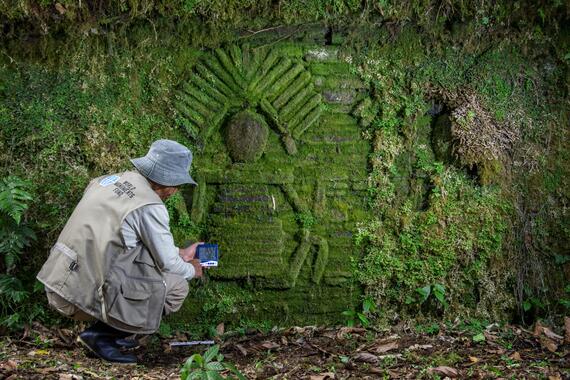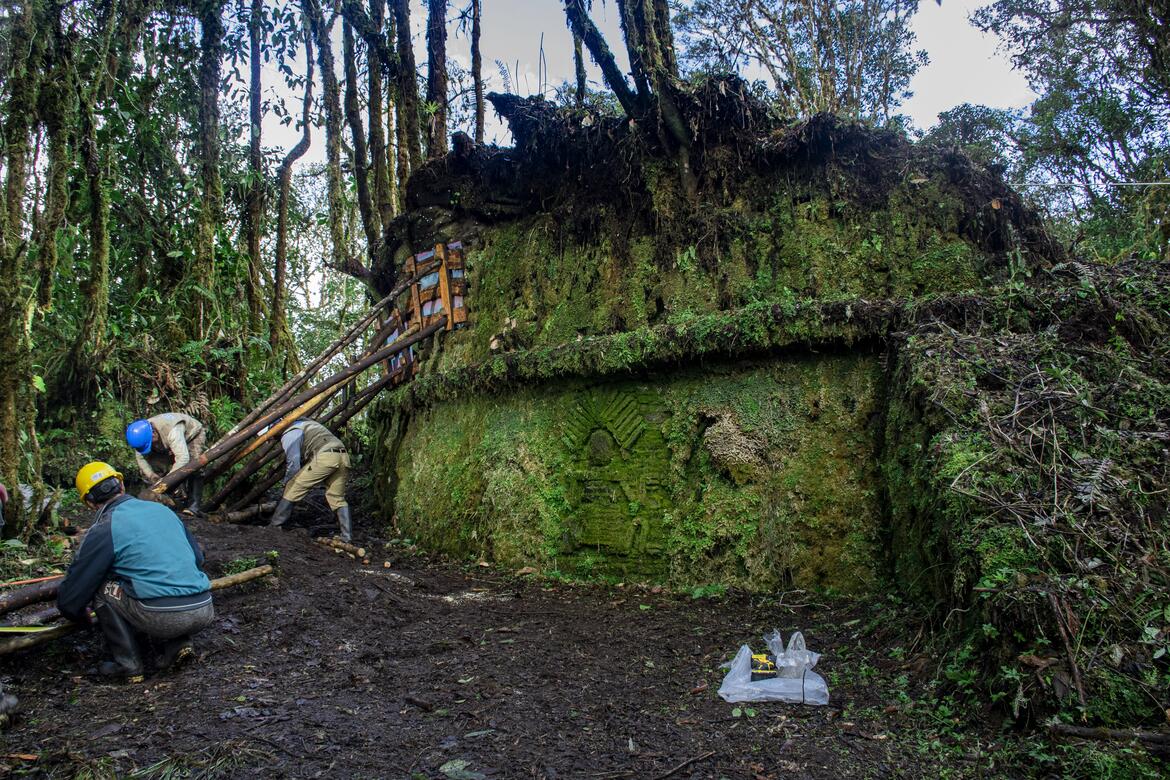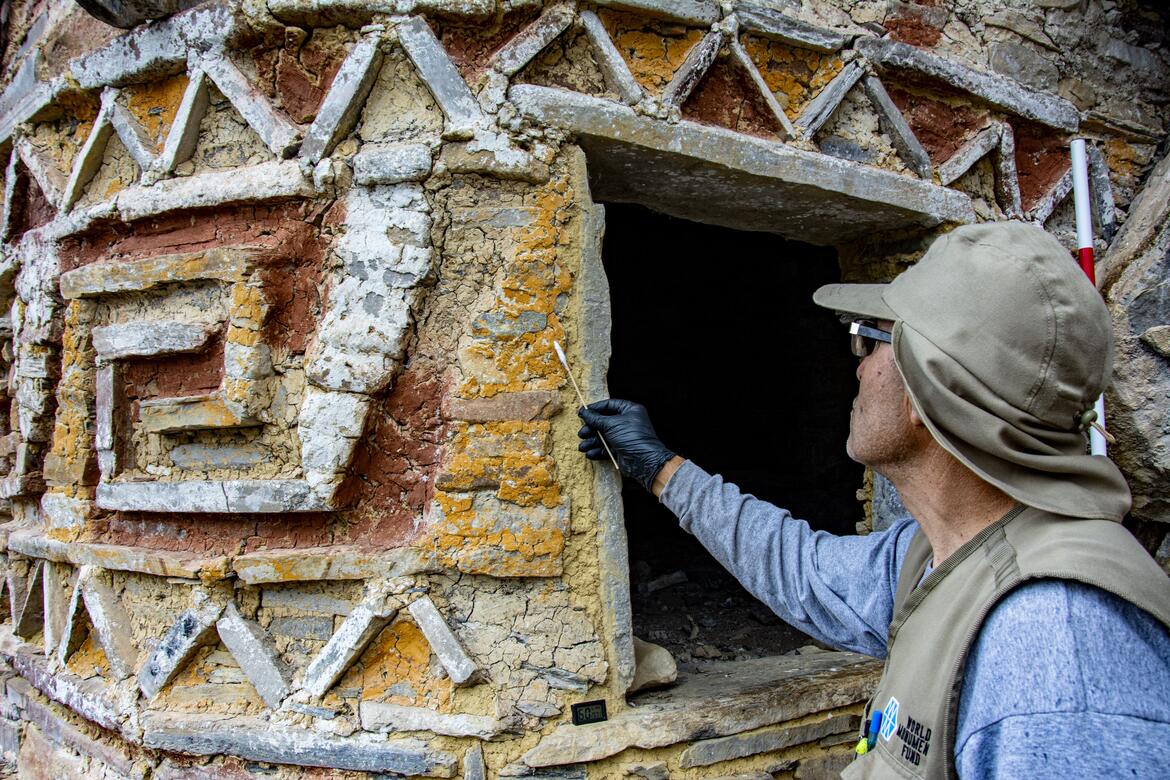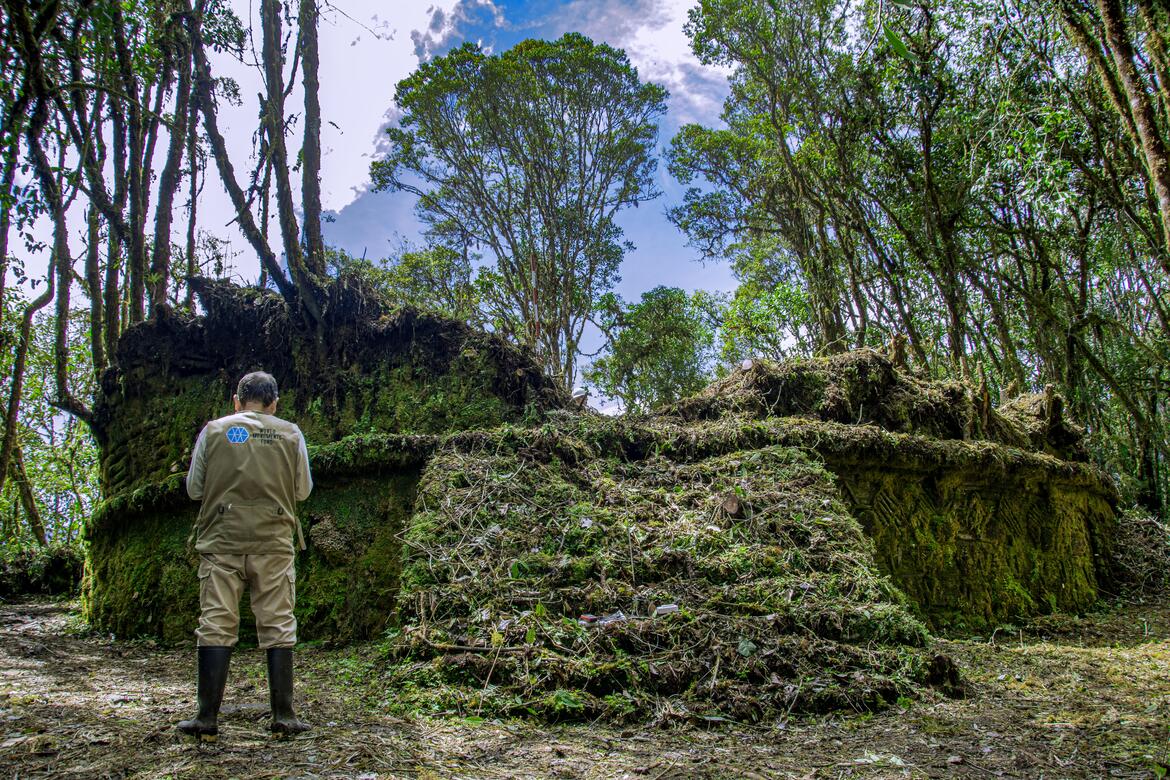Río Abiseo: Exploring the Chachapoyas Society's Expansion into the Amazon Rainforest

After the 2022 exploratory mission, our archaeological, conservation, and environmental monitoring teams entered the Río Abiseo National Park (PNRA) between July and October of this year to execute interventions focused on the access roads and the archaeological sites of Los Pinchudos and Gran Pajatén.
As for the primary access route, which is a crucial connection between the Chachapoyas nuclear territory in the Utcubamba Valley and the Amazon jungle, a denser archaeological occupation than previously known has been defined and published thanks to the record we were able to make of the associated archaeological sites as well as our study of the construction techniques used.
We have identified an intense archaeological occupation associated with the road between the sectors known as Mirador and La Playa. We have also completed the topographic survey between Mirador and the Montecristo River and the trail between this place and La Playa. Lastly, we evaluated the current potential for future archaeological and conservation interventions at these sites.
Since we have georeferencing for the road and its associated archaeological sites, this information can be integrated into the point cloud of the LiDAR flight that is on file from 2017 and another one soon to be carried out by World Monuments Fund (WMF) in 2024.
At Los Pinchudos Archaeological Complex, the team performed high-resolution photogrammetry on the eight existing mausolea in the complex as a basis for the diagnostic work of archaeologists and conservators. Comprehensive conservation actions have been accomplished on mausolea 1, 3, and 5, which was the goal for this year. In summary, the team has gotten a general and detailed photographic record of the state of conservation of the entire funerary complex. They have also monitored the site with technical data sheets, photos, and film, adding to the material produced during the 2005 and 2010 interventions by ICAM/WMF with the objective of establishing a progress comparison of existing pathologies. In addition, the team executed meteorological registration and control, monitoring, evaluation, and structural diagnosis, as well as evaluation of the physical-mechanical resistance of the base mortars and colored plasters, previously intervened (ICAM/WMF 2000). Likewise, the team performed the definitive conservation at the stabilization level of the seat mortars with new grouting in the area altered by wind erosion. In the lower part of Building 5, colored plastering and the pictorial layer fixation were executed.
The archaeological excavation that supported the conservation of Mausoleum 1 allowed the discovery of ceramics of the Recuay or Cajamarca style, different from the Chachapoyas, associated with bones from a removed child burial, cane imprints in mortar and ammonite fossil. Scientifically, this is evidence of the interactions of the Chachapoyas with societies from other territories.
We know Pinchudos Bajo as a kind of high cliff in the bluff a few meters below Los Pinchudos, which was intervened in 2000 by the ICAM/WMF project. During this campaign, the path that linked both sectors, unknown until then, was located, and it was identified: the complete archaeological record (site file, enclosures, and walls file), as well as an evaluation of the conservation of all its components.
The specialists explored the Pinchudos Bajo environment, resulting in its association with a road system of containment terraces probably connected to those existing in the Macedonio sector, a possible materials quarry for the mausolea, and the road already mentioned. Now we know that Los Pinchudos are not just mausolea but a set of construction elements that make up a much larger complex than previously known. We can show this graphically thanks to the studies of the technomorphology component since we have photogrammetry surveys, horizontal scanning that has generated a cloud of points, and in situ verification thanks to field photogrammetry.
Gran Pajatén is mainly characterized by circular buildings whose stone foundations are finely decorated with iconic relief motifs of the Chachapoyas society and an access staircase. Our main 2023 goal was the excavation and conservation of building E1 and a preliminary evaluation of buildings E2 and E7.
The work focused on the survey of the site’s occupation topographic plan, visible only at 45% given that the rest is covered by vegetation. This information has considerably expanded our knowledge of the sites’ extent and complexity compared to previous publications. Secondly, the team obtained a detailed topographical survey of Building 1 and performed preventive conservation interventions, placing a provisional protection structure to defend it from the constant and heavy rains in the area.
In greater detail, the conservation specialists carried out meteorological registration and control, a surface drainage installation to evacuate rainwater from the interior of Building 1, and specialized manual cleaning with a scalpel, brushes, and distilled water from the surface of an anthropomorphic character located in the northwest sector of Building 1, adjacent to the staircase (intervened area of 2.50 m2). Also, they performed preventive shoring to avoid the collapse and loss of part of the wall in the northern sector of Building 1, preventive conservation at the shoring level, and protection of critical areas exposed to weathering in the eastern and southern sectors of Building 1. Finally, cleaning the plant agents that were compromising the structural stability of Building 1.
It should be noted that in parallel, the social component team carried out visits to the communities and districts of the buffer area in La Libertad and San Martín regions to evaluate the knowledge level of the intervened heritage and the opportunities to strengthen institutional relationships that allow expanding the information available in the educational and academic community.
During 2024, we will disseminate the technical results of this campaign in greater detail, allowing us to outline the actions of the following entry of the specialists into the park. The work in Río Abiseo was possible thanks to the support of the Río Abiseo National Park and SERNANP, in addition to having the respective authorizations from the Ministry of Culture.
At WMF Peru, we remain committed in Río Abiseo to the balance between nature, landscape, heritage, and communities. We will continue efforts to preserve this unique heritage of the Chachapoyas.




